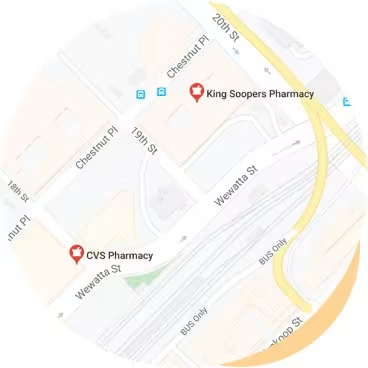
About Lasix (furosemide)
Lasix (furosemide) is a loop diuretic used to treat fluid retention (edema) and high blood pressure in people with congestive heart failure, liver disease, and kidney disorders. It helps the kidneys eliminate extra salt and water through urine.
Lasix is available only by prescription. It is available in a generic formulation, furosemide.
Lasix may be prescribed as tablets. It’s always important to follow the specific instructions on your prescription, as they can vary based on the formulation and dosage prescribed.
If you're prescribed Lasix, be sure to follow the prescribing doctor’s instructions regarding the use of this medication.
Lasix (furosemide) uses
There are several FDA-approved uses for Lasix, but your healthcare provider may also prescribe it off-label to treat other medical conditions.
Your PlushCare doctor may prescribe Lasix tablets for the following reasons or other reasons not listed here. Ask your online doctor or pharmacist if you have questions about why a medication is prescribed.
High blood pressure
Lasix is FDA-approved to treat high blood pressure (hypertension). Your doctor may prescribe Lasix alone or together with other blood pressure medications. Lasix isn't the first-line treatment for high blood pressure in most cases.
Edema
Lasix is FDA-approved to treat edema (fluid retention) in people with heart failure, kidney disease, and liver cirrhosis. As a diuretic (water pill), Lasix helps remove excess bodily fluid through the kidneys. Since swelling may be a symptom of an underlying condition, your physician may recommend additional tests to further evaluate the etiology of the swelling prior to starting lasix.
Lasix (furosemide) side effects
The side effects associated with taking Lasix tablets are typically mild. Individuals taking Lasix report a variety of side effects, and side effects may vary from patient to patient.
The side effects of Lasix may include:
Increased urination
Dry mouth
Nausea or vomiting
Other side effects, which are less common but might be more severe, could include:Dehydration
Electrolyte imbalance
Pancreatitis (inflammation of the pancreas)
Allergic reaction
You should call your doctor or pharmacist if you notice any adverse effects or develop other new or concerning symptoms.

How to take Lasix (furosemide)
Your doctor or pharmacist will provide instructions on how to take your Lasix prescription. Be sure to read your prescription label and follow the instructions. Call your doctor or pharmacy if you have any questions.
The dosage of Lasix will vary depending on why you need it and how severe your condition is. Lasix tablets have three strengths: 20 mg, 40 mg, and 80 mg.
Typically, adults may be prescribed with a furosemide dose by a primary care physician as low as 20 mg or high as 80 mg per day, although most doses will fall within the low to middle end of this range. For some patients or conditions, a specialist such as a nephrologist or cardiologist may recommend higher doses up to a maximum of 600 mg per day. High doses are not typical and usually are administered under careful clinical observation and laboratory monitoring.
Always follow your doctor’s instructions when taking Lasix. Your doctor may want you to take it once or twice a day. Avoid taking Lasix too late in the evening as it causes increased urination.

What to avoid while taking Lasix (furosemide)
Lasix has several drug interactions. Don’t change what you take without checking with your doctor or pharmacist. That includes other prescription medicine, supplements, and other drugs.
Tell your doctor if you're taking any of the following medications:
Lithium
Laxatives
Aminoglycoside antibiotics
Medications for diabetes, high blood pressure, and pain
Sucralfate
Angiotensin-converting enzyme (ACE) inhibitors
Chloral hydrate
Angiotensin II receptor antagonists (ARB)
Phenytoin
Barbiturates such as phenobarbital and secobarbital (Seconal)
Methotrexate (Trexall)
Probenecid (Probalan, Probenemid)
Blood pressure or heart medicine
Corticosteroids
Aspirin and other salicylates
Cyclosporine (Gengraf, Neoral, Sandimmune)
Cancer medicine, such as cisplatin
Digoxin (Lanoxin), ethacrynic acid (Edecrin)
Another diuretic, especially ethacrynic acid
Indomethacin (Indocin)
Lasix is not appropriate for everyone. Be sure to tell your doctor about any medical conditions you have, including:
Kidney disease or kidney failure
Prostate, bladder, or urination problems
Diabetes
Systemic lupus erythematosus (SLE)
Liver disease
Pregnant, nursing, or planning to become pregnant
Drinking alcohol while taking Lasix is not recommended as it can cause dizziness, low blood pressure, and dehydration. Tell your doctor if you're pregnant or breastfeeding, as Lasix may adversely affect breast milk.
Medication alternatives to Lasix (furosemide)
If your healthcare provider prefers to put you on another treatment, they may suggest other loop diuretics or high blood pressure medications in another drug class. Here are some common doctor-recommended alternatives based on your health issue:
High blood pressure
Aldactone (Spironolactone) Capoten (Captopril) Altace (Ramipril) Lotensin (Benazepril) Accupril (Quinapril) Lotrel (Amlodipine & Benazepril) Vasotec (Enalapril) Diovan (Valsartan) Edarbi (Azilsartan) Atacand (Candesartan Cilexetil) Benicar (Olmesartan) Toprol XL (Metoprolol) Lopressor (metoprolol tartrate) Intuniv (Guanfacine)Edema
Aldactone (Spironolactone) Microzide (Hydrochlorothiazide)Dyazide (triamterene/HCTZ)
Bumetanide (Bumex)
Lasix prescription FAQs
How much does Lasix cost?
Depending on your pharmacy, Lasix typically costs around $92 for one hundred without health insurance. Fortunately, generic prescriptions, such as furosemide, offer an affordable alternative.
How can I refill my Lasix prescription?
Book a virtual appointment with a board-certified PlushCare doctor to refill your Lasix prescription. After reviewing your symptoms and medical history, your doctor can send an electronic prescription to your local pharmacy.
Who should not take Lasix?
You should discuss with your physician about taking Lasix if you have certain medical conditions, such as:
Kidney disease
Prostate, bladder, or urination problems
Liver disease or cirrhosis
Electrolyte imbalance
High cholesterol
Gout or lupus
Thyroid problems
Diabetes
What happens if I miss a dose of Lasix?
If you miss a dose of Lasix, take the missed dose as soon as you remember. If it's almost time for the next dose, skip the missed dose and continue taking the medication regularly. Avoid taking two doses to make up for the missed dose.
What happens if I take too much Lasix?
Call your doctor immediately if you've taken too much Lasix, or contact your local poison control center. See emergency medical treatment for severe symptoms like dizziness or muscle spasms.
What are the benefits of Lasix?
Lasix removes excess salt and water from your bloodstream, which helps improve blood pressure and prevent fluid retention.
3 simple steps to request your Lasix prescription today

Step 1
Book a Lasix prescription request appointment.
You can book a same-day appointment from anywhere.

Step 2
Talk to your medical provider regarding your Lasix prescription.
You can visit a doctor on your smartphone or computer.

Step 3
Pick up your Lasix prescription.
We can send prescriptions to any local pharmacy.
Lasix prescription pricing details
How pricing works
To get a new or refill on your Lasix prescription, join our monthly membership and get discounted visits.
Paying with insurance
Membership
$16.99/month
First month free
Visits
Copay
30 days of free membership
Same-day appointments 7 days a week
Unlimited messages with your Care Team
Prescription discount card to save up to 80%
Exclusive discounts on lab tests
Free memberships for your family
Cancel anytime
Visit price with insurance
Often the same as an office visit. Most patients with in-network insurance pay $30 or less!
We accept these insurance plans and many more:
Paying without insurance
Membership
$16.99/month
First month free
Visits
$129
30 days of free membership
Same-day appointments 7 days a week
Unlimited messages with your Care Team
Prescription discount card to save up to 80%
Exclusive discounts on lab tests
Free memberships for your family
Cancel anytime
Visit price without insurance
Initial visits are $129.
If we're unable to treat you, we'll provide a full refund.
Sources:
PlushCare is dedicated to providing you with accurate and trustworthy health information
Cleveland Clinic. Furosemide Tablets. Accessed on September 2, 2022. https://my.clevelandclinic.org/health/drugs/18057-furosemide-tablets
Food and Drug Administration. Lasix (furosemide) tablets label. Accessed on September 2, 2022. https://www.accessdata.fda.gov/drugsatfda_docs/label/2010/016273s061lbl.pdf
MedlinePlus. Furosemide. Accessed on September 2, 2022.https://medlineplus.gov/druginfo/meds/a682858.html
PlushCare content is reviewed by MDs, PhDs, NPs, nutritionists, and other healthcare professionals. Learn more about our editorial standards and meet the medical team. The PlushCare site or any linked materials are not intended and should not be construed as medical advice, nor is the information a substitute for professional medical expertise or treatment.